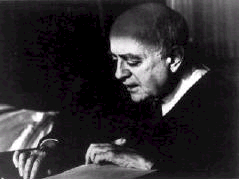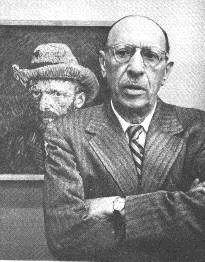![]()
Commercial Art Music![]()
Jonathan Le Cocq
Is a commercial environment good for music? In one sense the answer seems to be manifestly yes, given the vast quantities of music produced and sold in live and especially recorded performances. But this refers above all to contemporary popular music, sometimes explicitly called commercial music because of its marketability. What of jazz and especially classical or 'art’ music? Here the same terminology implies that there is something non-commercial about such music, perhaps because it cannot flourish (survive, even?) in a commercial environment, or perhaps just because it does not bear the imprint of market processes in its product. Thus the simplicity, accessibility and essential sameness of pop songs is said to derive from their being produced to feed mass consumer demand, a lowest common denominator of musical taste. This is an objective inimical to art music which must serve its own ends, prioritising progress and originality, regardless of marketability.
Such a view refers above all to new art and popular music, given the commercial availability of classical recordings of established repertoire (Bach, Beethoven and the like). The contrast was given its most explicit formulation by the Frankfurt school theorist Theodor Adorno (writing of pre-war popular music), but is given due weight even by those who reject its implicit criticism of popular song.[1] Some version of it is probably the received view amongst most of those involved in art music and of course it plays an important role in making the case for arts subsidy. In this essay, I shall attempt to explain some at least of the ideas and attitudes on which this scepticism about the idea of commercial art music rests, and indicate how some of those ideas or attitudes may be flawed. I shall also suggest some reasons why the idea of commercial art music might be seen in a more favourable light. By ‘commercial art music’ I mean the sale of musical works or performances of them as products, whether through concert performances, publication, or private subscription or commission. This is in contrast to a composer or performer working in regular employment for a patron or institution (the common pattern before the late eighteenth century), or being sponsored through public subsidy and academic placement (important sources of income for composers and performers in the present day).

Theodor Adorno
We might take as a starting point the article ‘On Freedom in Music’ by the American composer William Schuman. The article dates from the early 1950s, but still provides a representative statement of what we might call the received view on the idea of commercial art music.[2] Schuman defines freedom in music as ‘the right of the composer to create without censorship, the right of the artist to choose the music he performs, and the right of the listener to hear the artist of his choice.’[3] He tends to hover between the negative conception of freedom given here (freedom from censorship) and positive ones (the ‘right to be heard’),[4] and takes a broad view of censorship when he later states that ‘The composer who subjects himself to a restrictive formula in order to produce music of immediate marketability, exposes himself to a self-imposed censorship – the only censorship of music in the United States today.’[5]
Schuman immediately qualifies this, or expands on it, with a remark that is much to the point: ‘However, this is a question of artistic integrity. It seems to me that an integral part of true artistic endowment is the fierce determination to write according to one’s own standards. These standards cannot be altered in order to satisfy some extra-musical consideration. The composer cannot change his direction in order to meet the demands of others; on the contrary he often succeeds in bringing others around to his way. If he cannot do so, he will go his own way nevertheless, even if it means financial sacrifice. Every composer I know is as delighted as any other citizen when he is able to increase his earnings, but I have yet to see the composer who abandoned the writing of string quartets, which are notoriously uncommercial, for the writing of more commercial pieces, when what he really wanted to do was to compose string quartets. … This does not mean that the serious composer is above writing music on occasion, the primary intention of which is to make money. He will be frank to tell you that he is doing such work and if he is really good, the chances are that he will bring to any job a degree of genuine creativity which will remove it from the ordinary. In fact, what often happens is that while his creativity is removing it from the ordinary, it is also removing it from the commercial’.[6]
There is the hint of a contradiction in Schuman’s suggestion that a composer who does well at writing commercial music will probably produce non-commercial (or commercially bad) music. It is too close to saying that good commercial music is bad commercial music. It also makes little sense to describe writing for marketability as self-censorship as Schuman does here. At least, it makes no more sense than it does to talk of writing good rather than bad music as self-censorship. One cannot write without suppressing some ideas in favour of others, for whatever reason, and if one wishes to call this censorship then censorship becomes a boon. But Schuman’s remarks would be echoed by many contemporary composers for several reasons. These relate to ideas about commerce, about the nature of art, and about its function.
Commercial Music
An overly simple idea of commercial composition, suggested in Schuman and manifest in Adorno, is that such composition involves looking for what sells, and trying to reproduce it as closely as possible to maximise sales. Sure enough, something like this has long been a feature of the popular (commercial) music industry. An early example is the turn of the century song pluggers, whose job was partly to convey to the contracted songwriters of what became known as Tin Pan Alley the style of song currently in favour. More recently we have the formulaic writing and production methods of the 1980s hit factories of Stock, Aitken and Waterman amongst others, and made-for-T.V. bands like the Monkees or Hear’Say.
But in fact this is by no means the norm in the popular music industry. The more common pattern is diverse and acentric experimentation by bands and songwriters, frequently taken up by small independent labels, most of which fail but a few of which succeed and either grow into market leaders (e.g. the growth of Virgin largely built initially on the success of Mike Oldfield) or are snatched up by larger enterprises.
This is a much more entrepreneurial model than the ‘write to order’ concept of commercial music making: that is, one can view experiment in composition as a test for a possible market niche. This niche needn’t be large; it need only be viable. Reich, Glass, Part, Tavener, Gorecki and even Penderecki or Ligeti might all be viewed as accidental entrepreneurs in this respect, regardless of the fact that, compared to mainstream popular musicians, the market for their music is small.
Autonomy
Also problematic is the idea that art involves ‘standards [which] cannot be altered in order to satisfy some extra-musical consideration’; i.e. that true art is autonomous. This idea is inherited from 19th-century aesthetics, and derives ultimately from Kant. Leo Tolstoy’s influential essay What is Art?, [7] is typical cultivating the doctrine of art for art’s sake, with true art involving the communication of feeling impelled by ‘an irresistible inner impulse’. Art, by nature sublime, must be above the mundane world of commerce. For Bloomsbury Group art critics such as Roger Fry and Clive Bell, both influenced by Tolstoy, a true artist risked corruption from too great financial success which the market for art could provide.[8] They tended to follow Tolstoy in acknowledging that the fine art market was the most effective means of supporting an artist, but regarded this as involving as much risk as benefit. Adorno’s position is a neo-Marxist gloss on this romantic theory of art. Here, the anaesthetising blandness of popular music is not only the product of a capitalist mode of production (the song factory of Tin Pan Alley), but is also an instrument which reconciles the masses to the alienated condition of life in late capitalist society. (It is hard to expand on what is meant by ‘alienation’ or ‘late’ capitalism here; these terms tend towards empty cliché in much recent musical literature on the subject.) Art music by contrast is autonomous – independent of the influence of such pressures, whilst able to offer a kind of critique of them. Thus the artist works from a Tolstoyian inner vision, independent of the commercial pressures felt by the popular musician.

Tolstoy
It is ironical that the development of the romantic ideal of autonomous art (or art for art’s sake) was dependent to a large extent on the growing independence of composer from employer-patron in the late eighteenth century, and a shift towards a commercial economy of music. Haydn’s long career exemplified the process, with servile conditions of employment under the Esterhazy’s at the start giving way to an increasingly nominal position, independent celebrity and a substantial income from published works and concert performances by the end.[9] The London where Haydn scored a phenomenal success in the early 1790s was a thriving centre of musical life organised primarily on a commercial basis, through subscription and other types of concert.[10] Many of Haydn’s so-called London symphonies, then as now amongst his most admired works, were written precisely to meet the demands of this market for subscription concerts. Similarly Beethoven, whose music was for Adorno the touchstone of autonomous art, was amongst the first composers to survive very well without an employer-patron, in later life largely through publication, and commissions or subscriptions from admirers.

Haydn
Despite this historical context, this ideal of autonomous art continues to inspire the sense that art and commerce mix badly. We can once again turn to Schuman for a lucid indication of the sort of practical implication the idea of artistic autonomy can have for composers. He does so in the context of considering the problematic separation of new art music from its audience, largely through abandoning conventional tonal resources (the use of orthodox scales, harmonies, key centres and the like). He suggests an analogy which dates his article to the 1950s:
‘Crossing the ocean by steamer is just about the same now as it was twenty years ago, but the fact that one can now cross by airplane completely alters the concept of travelling by ship, even though that in itself remains the same. In music the availability of extended and altered tonal relationships does not mean that the composer is obliged to use all these relationships any more than one must elect to travel by air. It merely means that evaluation of the product will be influenced by a composer’s failure to use existing technical facilities. … once new esthetic principles have been accepted into the language of music, it is no longer possible for composers to gain serious recognition if they continue to write as though these did not exist.’[11]
This is fairly typical of musical thinking in the 1950s, when scepticism about writing tonally in art music was at its height, especially in musical educational institutions. But the fact that such thinking can be located historically (and, in support of this, we can say that attitudes towards compositional style tend to be considerably more open now than in the past) already suggests a flaw in it. New tonal procedures may well be purely technical matters, but attitudes towards their use cannot be. What allows composers to gain serious recognition from their peers will be a matter of values rather than purely a factual question relating to technique, and values are bound to be in part determined by extra-musical considerations. A composer’s sense of what possibilities are open to him may be determined by the attitudes of his teachers or his peers, by the types of music to which he has been exposed and his understanding of them, or by a host of personal experiences unrelated to music. It is hard to suggest that the autonomy of art must rule out such influences. But if so, it is equally difficult for that principle to exclude a role for commercial considerations in the creation of art.
The most appropriate reading of artistic autonomy is not that it rules out extra-musical influences (including commercial ones) on the creation or appreciation of art music, but that such music should not be merely functional, such as Muzak or disposable dance music. This is consistent with the commercial production of music if the musical product one is attempting to sell is one that is meant to be treated as valuable in its own right. This simple test is met even by much popular music, let alone art music. To put this another way, if there are no grounds, historical or theoretical, to suppose that art music that sells is less good art, or less good music, than that which does not, then there is no good reason to exclude commercial considerations from the production of art.
Originality, progress and education
It might be suggested, however, that there are theoretical grounds for supposing that commercial art is likely to be inferior to non-commercial. A case against commercial art music might go like this:
There are certain things that good art music (or, if one wishes to define art in this way, any art music) should do: it should break new ground; it should demonstrate technical progress; and through these and other things it should educate the public by opening minds to new experiences and, perhaps, by addressing social or political concerns in a way that only art can – by securing an emotional or other form of sympathetic engagement with its audience. But there is no commercial market for such ground-breaking art, as we can see from the disengagement between contemporary art and its audience, for the public by and large prefers and will pay for only the familiar and unchallenging.
This is more or less the Adorno view of what is wrong with popular music, and as regards art is echoed by those contemporary composers who despair at public attitudes to new music, and see them as embodying a ‘museum culture’.[12]
All of these claims about art would need some elaboration to make this case effectively. For example, it is quite hard to pin down how art educates, or to say what particular merit this form of education has. This is especially true of abstract art forms like music. It is also difficult both to define progress in music (given that any new work must have something original to it, if it is to be other than plagiarised), and to equate such a definition with artistic merit (given that some of the finest composers, Bach and Mozart being the most celebrated examples, are more highly regarded for their mastery than for their innovation). But for our purposes we can take these ideas as given, and confine ourselves to the following observations.
First, this complex of ideas about art is another factor helping to
explain scepticism about commercial art music. It implies an
idealism about art, and attaches an importance to it, which is more
attractive than the more mundane commercial concept of meeting
public needs. This bears comparison with Hayek’s argument
that the success of socialism as an ideology lies partly in its
promise of radical, utopian progress in which intellectuals can play
a significant part.[13] Similarly, for the contemporary
composer the role of progressive educator is more attractive than
that of, essentially, responsive entertainer, this being what the
paying public supposedly demands.
But is this really the choice? The second point is to question whether progress, originality or education, the ideals to which art is said to aspire, really are uncommercial. In other areas of life we often place a high premium on these things, and are willing to pay for them. It is hard to sustain the idea that we inhabit a museum culture in a society which embraces such rapid and constant growth in technical and other modes of innovation, such as the computer and the internet, or for that matter the amplifier and the synthesiser. If it is to be said that art in general, and music in particular are immune to this enthusiastic adoption of the new, we need some general reason why this is the case.
We have already noted that, historically, it has been possible for art music to prosper on a commercial basis; even if defensible theoretically, the received view would need to explain this historical evidence away, presumably on the basis that conditions now are different than in previous centuries. Here we might return to Schuman’s concern, shared by most musicians from the second half of the twentieth century onward: the seeming gulf between new art music and its likely audience (that is, the audience that will turn out to performances, or purchase recordings, of Mozart, Beethoven and Wagner, but not Schoenberg, Boulez or Birtwistle). It is possible to overstate this supposed gulf: it is more the case that the market for some of this music is very small than that it is non-existent, which gives it a common ground with other, highly specialised markets. But in any case, there is a risk of putting the cart before the horse here. It makes more sense to say that the gulf between composer and audience exists because composers have ignored commercial considerations, than it does to say that art music must be uncommercial because of the gulf between composer and audience.

Schoenberg, Boulez and Birtwistle
Some advantages of commerce
We have so far been concerned with explaining the scepticism about commercial art music which I have described as the received view, pointing out some possible errors on which that scepticism might rest. But we might end by enlarging on the sometimes overlooked benefits of commerce to art music which arise out of this discussion.
The first of these is to note that commercial patronage is likely to be more diverse than employer-patronage or, for that matter, public subsidy, where financial support is at the discretion of a relatively small number of patrons or subsidising bodies. Prima facie, such diversity of patronage should allow more room for musicians to experiment, and more varied musical outcomes, than other patronage systems. It is, for instance, not obvious how the historically-informed performance movement would have flourished to the extent that it has under an employer system, and its early development was largely free of the public subsidy system. This may imply a less unified musical art world than in earlier times, but the idea that this is necessarily a bad thing needs argument.
One might respond that, while conceivably preferable to an employer-patron system, relying on a market for art music is bound to be much more constricting on composers and other musicians than the present subsidy system, where one of the Arts Council’s policy goals is precisely to foster innovation. And it is certainly possible that subsidy has allowed some musical avenues to be explored to a greater extent than would otherwise be the case. But if we accept that artistic evolution is not wholly autonomous – that there is not an inevitable chain of development which artists must follow come what may, but rather that the sort of art we have depends on the social, cultural, economic and technological circumstances in which it is created – then at any time we shall find some artistic directions being pursued at the expense of others according to those circumstances, and there is no obvious reason to prefer the developments that occur in a subsidy rather than a commercial system. That is, the type of musical innovation that derives from subsidy, or even the extent of it, should not be assumed to be better than it would be in a more fully commercial environment.
This raises the closely related issue of the role of marketability in establishing musical boundaries. Stravinsky famously commented on the need for a composer to limit his or her choices – to assert boundaries which will restrict the potentially infinite possibilities presented by a blank sheet of manuscript, or nowadays perhaps, unrecorded digital audio tape. Such boundaries are often tacit, and are usually regarded as technical or theoretical (for example, the use of modulation as the primary structural device for eighteenth- and nineteenth-century composers). But they can equally well be technological (the limitations imposed by particular instruments, or electro-acoustic resources) and, most importantly for our purposes, social or economic. For the great Netherlandish composers of the fifteenth and sixteenth centuries the cyclical mass that imposed a structure framing their musical thoughts and encouraging various forms of artistic experimentation (in treatment of the cantus firmus, say, or use of imitative counterpoint) was the outcome of the cultural dominance of the Church of Rome and the importance of ecclesiastical patronage. In this sense, the need to reconcile artistic integrity with marketability could be regarded as equivalent to the functional requirements of the mass – as a healthily creative framework surrounding compositional choice, and a spur for purposeful experiment rather than a restriction of it.

Stravinsky
Finally, it pays to remind ourselves that commerce is fundamentally communicative. That is, through pricing and exchange, we discover what is viable and desirable: what makes an effective, positive-sum interaction between producer and consumer of music. As we have seen, a major concern for Schuman is the fact that new art music is ‘difficult’ for its audience; i.e. both not much liked, and a source of puzzlement as to what could be liked in it. Schuman himself describes this as a failure of communication between composer and audience (or at least, as a lack of comprehension on the part of the latter, which amounts to the same thing).
The interesting thing about this communication is that it is assumed only to go one way: a message from artist to audience, with the art work as the medium, and with little possibility of reciprocation. Approval of a work comes in the form of applause (often signifying no more than politeness), or critical commentaries from an atypical band of critics and academics. The market is, of course, a relatively blunt instrument for informing musicians about their work, but it is the principal, probably the only, means through which the bulk of the audience for art can convey its interest, approval, and ultimately the value it places on it. It is little wonder that a gulf has opened between composer and audience when that mechanism is viewed with such scepticism.
This article was first published as “Commercial Art Music", Economic Affairs - Culture and Economics (Journal of the Institute of Economic Affairs), v.22 no. 2, 2002, 8-13.
[1] Most introductory academic texts on popular music spend time on Adorno: examples include Richard Middleton’s Studying Popular Music, Open University Press, 1990 and Brian Longhurst’s Popular Music & Society, Polity Press, 1995.
[2] In Sculley Bradley ed., The Arts in Renewal, University of Philadelphia Press, 1951, 67-106
[3] Schuman, p. 68
[4] Schuman, p. 71
[5] Schuman, pp. 80-1
[6] Schuman, p. 81. Schuman’s overall perspective is quite relaxed. He finds some merit in the fact that composers have to rely on other forms of income to make a living, and while considering the U.S. of the 1950s as ‘no utopia for the composer’, is confident that composers can earn a ‘reasonable livelihood’ from related activities.
[7] New York: Macmillan, 1960, first published in England in 1898
[8] See Craufurd D. W. Goodwin, ‘The Economics of Art through Art Critics’ Eyes’ in Neil De Marchi and Craufurd D. W. Goodwin eds., Economic Engagements with Art, Duke University Press, 1999, 157-184
[9] Haydn’s initial contract of employment with the Esterhazys is indicative of the position of the composer working for an employer-patron. It includes the following requirements: When music is to be performed the Vice-Kapellmeister [i.e. Haydn] and his subordinates are to appear in uniform, all alike in clean white stockings and linen, and with hair powdered and either in a pigtail or a bag. His behaviour is to be the more exemplary as the other musicians are placed under his authority and should be able to follow his good example; he is therefore to eat and drink apart from them and avoid all undue familiarity with them. He is under obligation to compose at all times whatever works His Highness may require, and may give such works to no one else, nor write for any one else without His Highness's knowledge and permission. He is to present himself in the antechamber daily, morning and afternoon, to receive his orders, and is responsible for the punctuality of the musicians and for reporting late-comers and absentees. … He is to be responsible for the care and upkeep of all music and musical instruments; coach the singers … and, as he is a performer on several instruments, he must be prepared to make himself useful on all of them. Quoted in Rosemary Hughes, The Master Musicians – Haydn, Dent, 1989, 32-3
[10] The commercial organisation of London’s concert life, and its remarkable vigour, is well documented in Simon McVeigh’s Concert Life in London from Mozart to Haydn, CUP, 1993.
[11] Schuman, p. 70
[12] See for instance Pierre Boulez, Notes of an Apprenticeship, ed. Paule Thévenis, trans. Herbert Weinstock, Alfred A. Knopf, 1968.
[13] Friedrich A. Hayek The Intellectuals and Socialism, Institute of Economic Affairs, 1998 [1949]
![]()
 Top 50 books of all time : by Old Hickory:-
Top 50 books of all time : by Old Hickory:-
"I have limited the selection to the books I have read. I keep to the norm of not recommending to others books I have yet to read. Clearly, books I have not read by now suggests a judgement of some sort."
Further reading:
" A landmark study of crowd psychology and mass mania throughout history. It includes accounts of classic scams and grand scale madnesses such as the Mississippi Scheme that swept France in 1720, the South Sea Bubble and the Tulip mania of Holland. "
PDF version
of this page
![]()
music.pdf
Download
Requires Adobe
Acrobat Reader. This is
available
for free at
www.adobe.com
and on many free CDs.

The Alternative
Bookshop
Which specialises in,
but does not limit itself
to, books on Liberty
and Freedom ... Book
reviews, links,
bestsellers, rareties,
second— hand,
best price on books,
find rare books.

Laissez Faire
Books
The World's Largest
Selection of Books on
Liberty
|
|
|
|
|
|
|
|